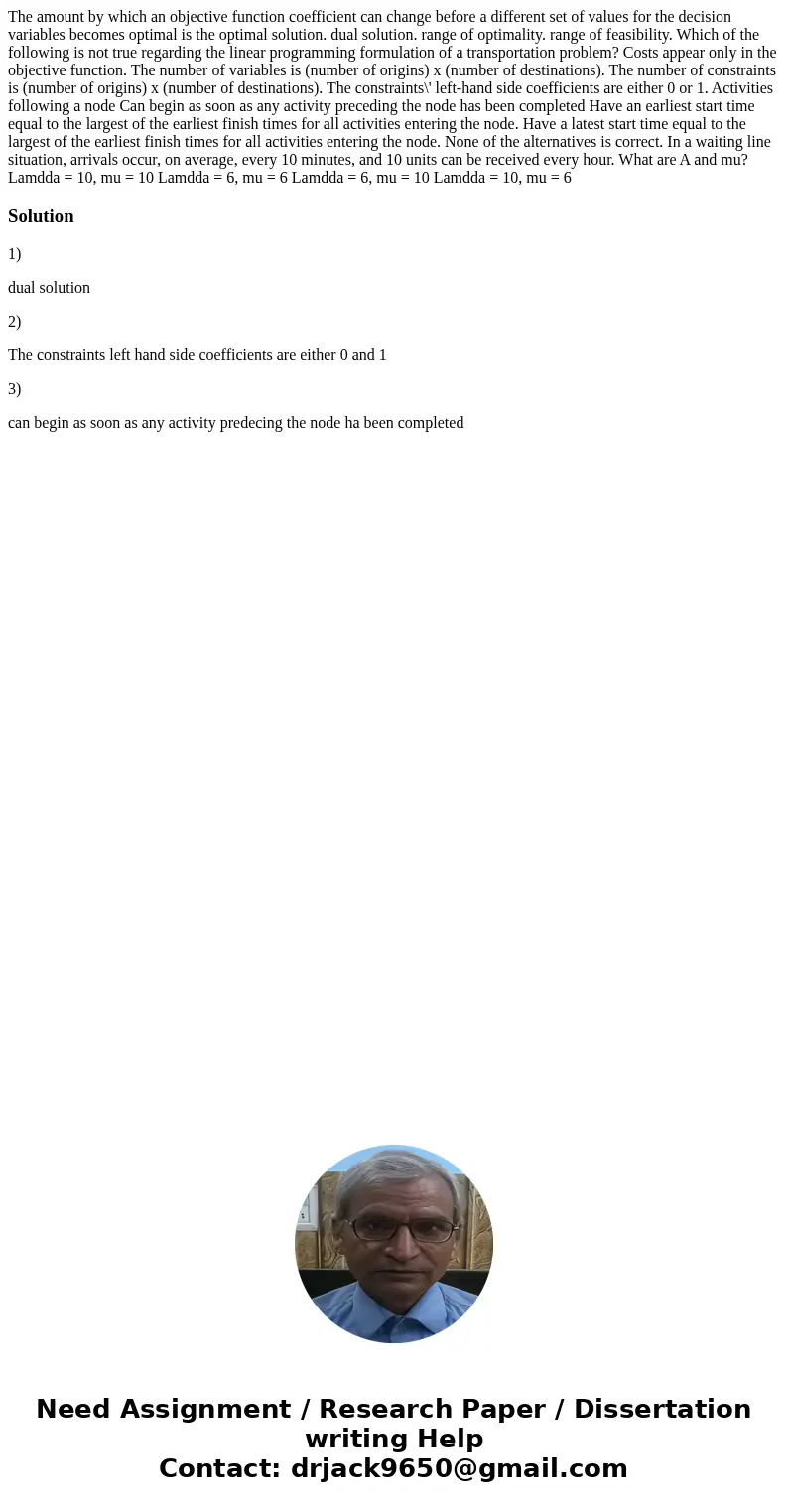The amount by which an objective function coefficient can ch
The amount by which an objective function coefficient can change before a different set of values for the decision variables becomes optimal is the optimal solution. dual solution. range of optimality. range of feasibility. Which of the following is not true regarding the linear programming formulation of a transportation problem? Costs appear only in the objective function. The number of variables is (number of origins) x (number of destinations). The number of constraints is (number of origins) x (number of destinations). The constraints\' left-hand side coefficients are either 0 or 1. Activities following a node Can begin as soon as any activity preceding the node has been completed Have an earliest start time equal to the largest of the earliest finish times for all activities entering the node. Have a latest start time equal to the largest of the earliest finish times for all activities entering the node. None of the alternatives is correct. In a waiting line situation, arrivals occur, on average, every 10 minutes, and 10 units can be received every hour. What are A and mu? Lamdda = 10, mu = 10 Lamdda = 6, mu = 6 Lamdda = 6, mu = 10 Lamdda = 10, mu = 6
Solution
1)
dual solution
2)
The constraints left hand side coefficients are either 0 and 1
3)
can begin as soon as any activity predecing the node ha been completed

 Homework Sourse
Homework Sourse